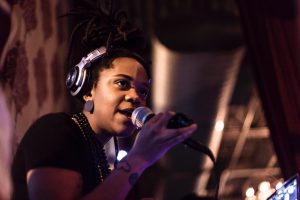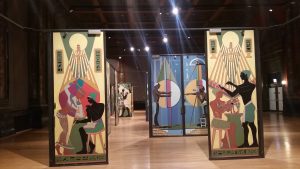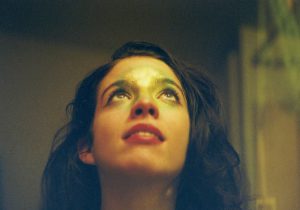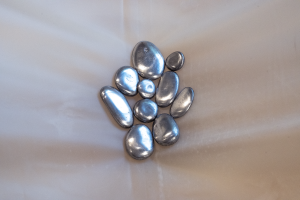The rules are simple: “No boys. No booze. No Judgement.” Dance Dance Party Party (DDPP) is an all female dance event that was started in New York City, but has since moved to various cities across the country. The Chicago event is on Wednesday and Sunday evenings. The rental studio is small-to-medium sized, with a mirror that stretches along the southfacing wall, a black cotton curtain pulled halfway across its length. The women who participate in DDPP come on a drop-in basis. They are of varying sizes, dancing abilities, ethnicities, and legging tastes. It’s an hour of losing yourself to music and all of the DJ’s are also DDPP participants. Anyone who has attended an event is eligible to DJ.
Before any DDPP session starts, rules are given. One of the rules is “No talking.” Another rule is “take a break if you need to, but don’t be too loud, we have neighbors.” You dance. You dance some more. I heard about it this year and I have been three times, so far. At the end of a session, it’s pretty incredible. You feel a connection to these women who you don’t know, just from dancing in a mostly darkened room save for the spinning party lights in the corner and Christmas lights on the ceiling.
Catherine, the organizer of the event, met me at a Starbucks across the street from the studio to tell me more about what it’s like to run this biweekly event.
Ida Cuttler: How long have you been running Dance Dance Party Party?
Catherine Carrigan: I’ve been doing it for six or seven years, and I’ve been running it for five.
IC: How did you find out about it?
CC: I found out about it through some friends who had been going to it a year before I was brave enough to show up at the studio. I wanted to go. It sounded fun. I think from the outside it seems like a cool club that you want to join and once you get in you realize: A. It’s not that cool and B. I’m already doing it just by walking in the door.
IC: I read one Chicago Tribune article about you guys, and a reporter ended, “Why we decide to reveal our inner spaz to this room of mostly strangers is unclear.” Do you share this opinion, that it’s an unclear thing or a mystery as to why people enjoy Dance Dance Party Party or now, having run it for awhile, do you feel like you get why it appeals to people?
CC: I see why. Daily life is hard. Feeling free and less self-conscious is a thing we all aspire to, and soon you realize it’s a dark room and no one is really paying attention to [you], but also it feels good to share a bit of [yourself] with other people, whether you know them well or not. Dance forces us out of our heads and into our whole bodies. I think there is something really powerful about knowing yourself in that way, too.
IC: There are a lot of people who seem to gravitate towards DDPP with the idea of fitness in mind, why do you think that it attracts women who might not want to be at a typical gym?
CC: There is no focus on following the steps and also there is no focus on what you should look like, and that’s rare in what is an extremely bodyconscious and doing-it-right world.
IC: There is a mirror in the space, but it’s also dark and so it’s hard to see yourself.
CC: Yes, the mirror. It’s actually not that hard. [laughs] People at first shy away from the mirror, but then there is a curiosity of wanting to know what you look like when you dance. I wouldn’t say DDPP is de-sexualized, it’s just free of that male gaze. Which I, personally, am pretty tired of. We encourage people to check themselves out. There is an exciting moment to do a sexy move and watch it in the mirror, and know you won’t be judged by anyone. I know an instructor at an LA chapter of DDPP who told everyone, “Ok, I want everyone to do something that scares you a little bit.” For a lot of people, the events are a place for people to get out of their shells.
IC: One of the rules of Dance Dance Party Party is “no talking.” Would you talk a little bit about why this is important to the DDPP events?
CC: It’s so people who want to dance don’t have to worry about being judged for their dancing. But, it’s also so people are present. For me, the dance parties [are] almost a mindfulness practice. Being present for an hour is something we don’t get to do often in our daily lives.
IC: I think it also discourages competition, too–something that, unfortunately, I have noticed happens a lot in spaces that are all women.
CC: Yes. I think of it like Anne Friedman’s shine theory: I shine you shine. The “no judgement” thing is about trying to not judge others, but also don’t judge yourself. We don’t want you to compare yourself to other people. Sometimes, I’ll be thinking, “She has better core than me” and then I’m like what purpose does that serve in my life?
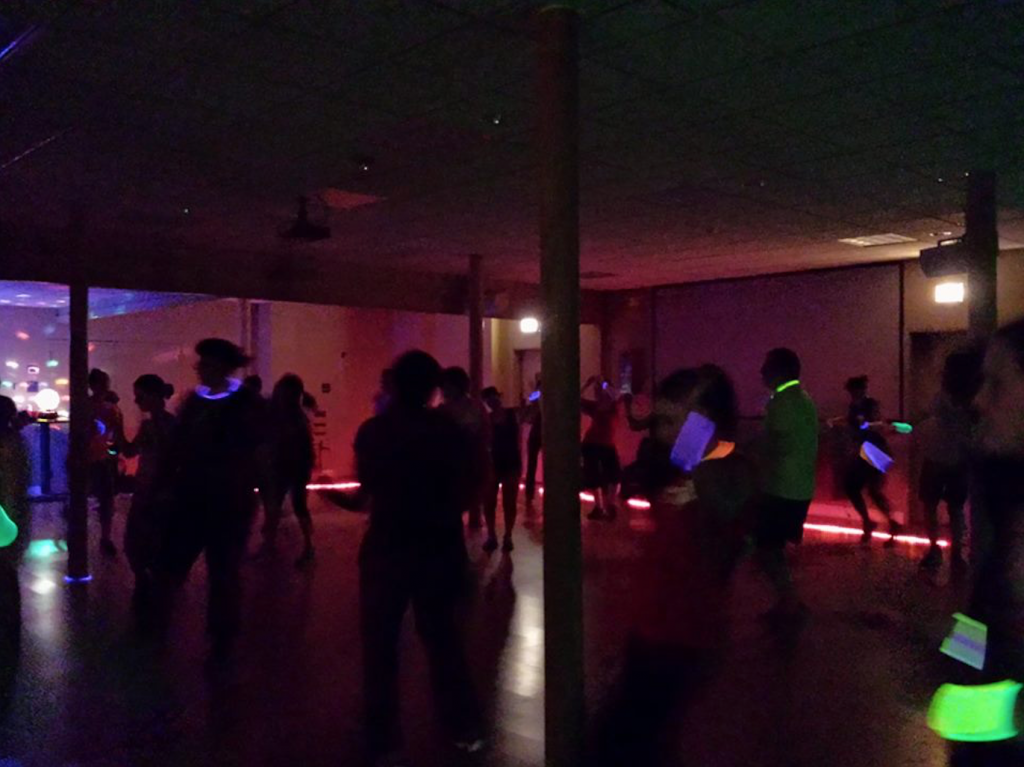
IC: You and the other people who run it call yourselves “Den Mothers.” How did that name get started?
CC: I think it was supposed to be like a Brownie troop. But it’s just that we are the people who set up and take down the event and also provide a positive attitude. That’s important: When we are in the space we try to be friendly and try to shepherd people into this thing that at first feels a little strange, and is kinda strange. Adult women hopping around like bunnies. Den Mothers are intended to be a little maternal, but mostly just excited.
IC: In some ways, I feel like you could describe attending DDPP as feminist separatist movement: separating from the world of ostensibly male-defined, male-dominated institutions, relationships, roles, and activities, and in some ways it can be described as a 10 year old sleepover with all your pals.
CC: I think our goal is for people to figure out what it is to them. At different times in people’s lives it means different things. I know people who have come to us who after an experience of dancing have said, “I started crying midway through class” and I’m like, “Yup. That’s happened to me.” To really be in a place where you feel so free of judgement. [For] people who’ve struggled with illness and breakups, it can be emotional experience.
IC: What is your relationship to the queer, trans or gender non-defining community?
CC: There are a lot of people who show up who are queer or trans. It’s tricky, though when, every once in awhile, we do have our gay male friends say, “that sounds fun can I come?” and we tell them no. We kinda feel like [they] can go to another space. This is our one space. There is something different about having a space that just focuses on the female experience. It’s about stepping out of a world where it feels like there is a little extra attention on us, on everything we do: positively, negatively, and everything in between. But I also get it, I get where they are coming from, we all wanna be in a welcoming environment. There is a group called “No lights, No lycra” that is a coed version similar to us. And we point men to that space, but we wanna keep DDPP all female.
IC: What are some lessons or tools from the dark and mirrored, all female room of DDPP that you feel the women who come leave equipped with?
CC: The biggest thing is that it makes me –oh man, this makes me feel emotional – the biggest thing is, I feel more comfortable taking up more space with my body. I don’t think I apologize as much with my body anymore. As a woman, it’s hard to feel comfortable taking up space, and DDPP has made me aware of it being okay to take up that space, and that alone feels powerful. To have a place where you can feel confident and secure and safe, like DDPP, lets you be like that in the real world, too.
When Catherine isn’t shaking it on the DDPP dance floor (or doing her favorite and patented move of jumping out of the cotton curtains and surprising everyone) she is as an academic advisor in the Theater/Radio/Television/Film departments at Northwestern University.
To learn more about DDPP check out their website, dancedancepartyparty.com.
This interview has been condensed and edited.
 Ida Cuttler is a writer and performer living in Chicago, Illinois. She is an active ensemble member of the Neo-Futurists. Ida’s live lit credits include The Arrow, The Paper Machete, Write Club, The Annoyance, and Cool Shorts. Ida’s essay “How did I Happen” was published in Storyclub magazine’s online publication. Additionally, Ida frequently contributes content to the Neofuturist blog. More of Ida’s writing can be found on her Medium.
Ida Cuttler is a writer and performer living in Chicago, Illinois. She is an active ensemble member of the Neo-Futurists. Ida’s live lit credits include The Arrow, The Paper Machete, Write Club, The Annoyance, and Cool Shorts. Ida’s essay “How did I Happen” was published in Storyclub magazine’s online publication. Additionally, Ida frequently contributes content to the Neofuturist blog. More of Ida’s writing can be found on her Medium.

